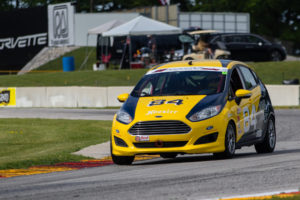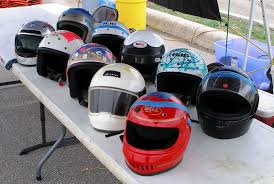
I’ve been thinking about how to give back and I’d like to introduce a series on How to Get Started in Road Racing. I’ll start with my journey and advice and invite friends and competitors to come on here and give their perspectives.
Step One: Autocrossing.

For me, it started with listening to the Indy 500 on the radio in the garage with my dad, while he was working on the family car. In Indiana, we couldn’t watch the race live until well into the 1990s. Even now, listening to Jim Nabors, god rest his soul, belting out Back Home Again gives me goosebumps and takes me back to those days when I six and listening to my heroes on the radio.
Soon after that, a poster of a Martini Porsche 935 – huge flames shooting out the exhaust – went up on my wall. Speed Racer was on at 7am on Saturdays and I did my best to be up and ready for Speed’s next adventure. It wasn’t until much later that I learned about Can-Am and recognized those shapes as Racer X’s car!
Growing up in Indiana, I benchmarked everything against the Indy 500, Quarter Midgets and Go-Karts. Those were all out of reach for several reasons. Mostly, I did not know who to contact to get involved. None of our friends or family raced, so I didn’t have many resources to learn from. Today, those contacts and resources are only a few google searches away.
I started, as many road racers do, with Autocrossing.
Getting Started in Autocrossing:

Autocrossing is a timed event – one competitor at a time tries to be fastest between cones laid out in a large parking lot – top speeds are usually under 40mph. A premium is placed on precision and consistency. Typically, competitors use their performance street cars, there are classes for just about every vehicle.
My first event was completely eye-opening! I signed up with a group I met at the Chicago Auto Show. They had a class for newbies like me – they provided a loaner helmet and as long as I brought my own car, they would ride along and help me learn. When I arrived, everything from Corvettes to Mazda GLCs were out there competing in their own classes. I brought my dad’s Honda Prelude 4ws and had a blast. During those first few events in a parking lot in the northwest suburbs of Chicago, I learned how welcoming this group was. They wanted new people to join them, needed new people to help keep the passion alive.
Autocrossing is a low investment way to dip your toe into the water. By and large, everybody wants to help, so ask questions, lots of questions – no one is going to make fun of your lack of knowledge, as we were all there once.
However, newbie know-it-all’s are often given less help than those with a bit of humility and openness. Not to make this a dos and don’ts, but try your best to dial back the brand listing of all of your mods on your car and try instead to ask your competitors what they’ve seen work in autocrossing. It’s a specialized sport and some mods that are great on-road may not help that much in autocrossing. It’s a good way to reach out to your competitors for help. What works what doesn’t. That kind of thing.
For the first few events, you’ll be learning how to handle your car and how to fit it between the cones. Find out if they have an autocross school. In autocross schools, typically at the first event of the season, you’ll meet lots of other competitors out there doing it for the first time.
This is a good time to find out what kind of helmet you’ll need. You can usually borrow one from the club for the first few events,

Autocross helmets are reasonably inexpensive. Budget for a helmet that first year. I don’t recommend buying a used helmet – you don’t know where it’s been and what it’s been subject to. Buy a new helmet before you buy tires, gloves, shoes or anything else for autocrossing. Top Tip: when you’re borrowing a helmet, the lender tends to take a dim view of your new set of tires. You’ll figure it out.
Make sure you work you shifts out on track picking up cones. Watch the better drivers – you can see who’s fast from the timesheets posted near timing and scoring. If you can’t find it, ask whoever’s next to you. Try to get a ride with some of the better drivers – it’s amazing what you can learn. Walk the course with them prior to the first run, learn from them. Be a good sponge. Often competitors with the same type of car are super willing to help with tips and tricks too. However, before you go changing suspension or alignment settings, get familiar with your car and how it performs between the cones. You’ll be dying to make changes, but if you can hold off and get a reasonable baseline on your own performance, then you’ll be able to tell if your changes helped or not. Otherwise those changes may mask something you need to improve on your driving skills.
One of the really great things about autocrossing is how much it helps you be precise – you can’t be sloppy and fast or you’ll mow down cones. When you’ve cut your teeth on an autocross course, you find that road race tracks, even narrow ones, seem huge in comparison. Run off room is a new thing!
For my journey, autocrossing was the first step, once I got out on a real road course, Brainerd International Raceway, I started trying to find ways to get back there. More on that transition in my next post.
From this:

To this:

Where to Go to Learn More:
Today there are a ton of autocross clubs across the country. Learn more on the SCCA site.
https://www.scca.com/pages/what-is-autocross
Also, local clubs and even single marque car clubs often welcome cars from any brand – consider searching for autocross clubs in your area and you will likely find events from Corvette Club, Porsche Club, Audi Club, Mini Club and many, many others.
For the next post I’ll ask a national autocross champion highlight his path to pro racing.
